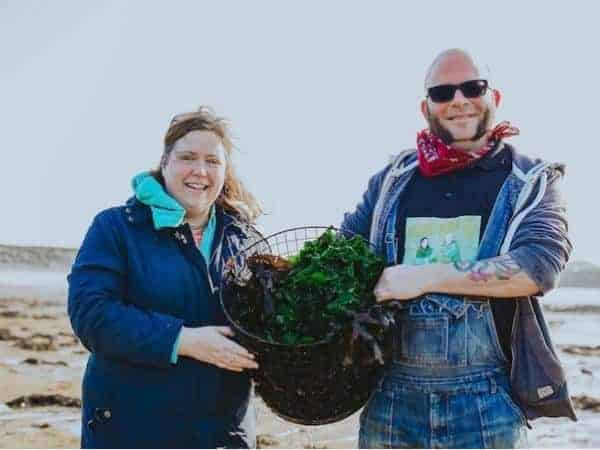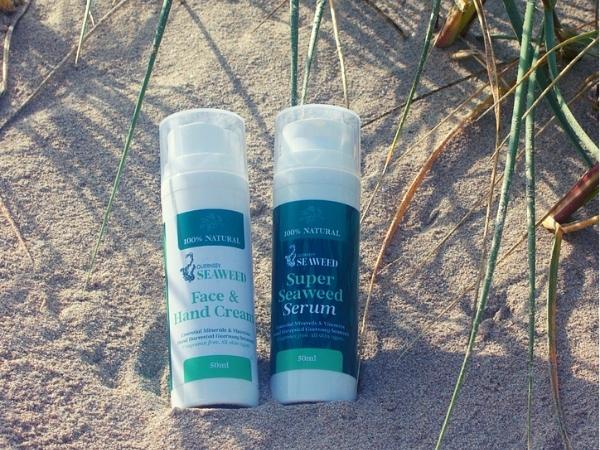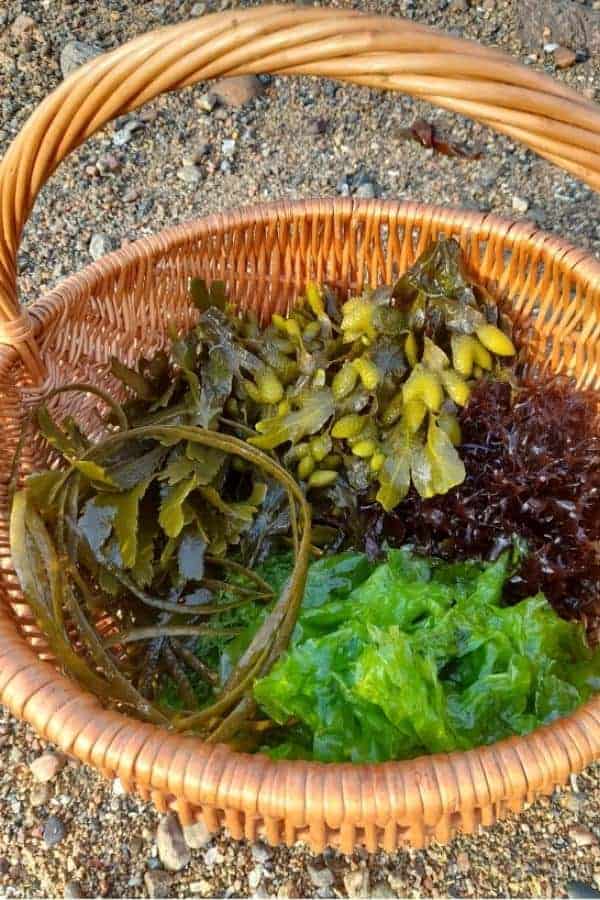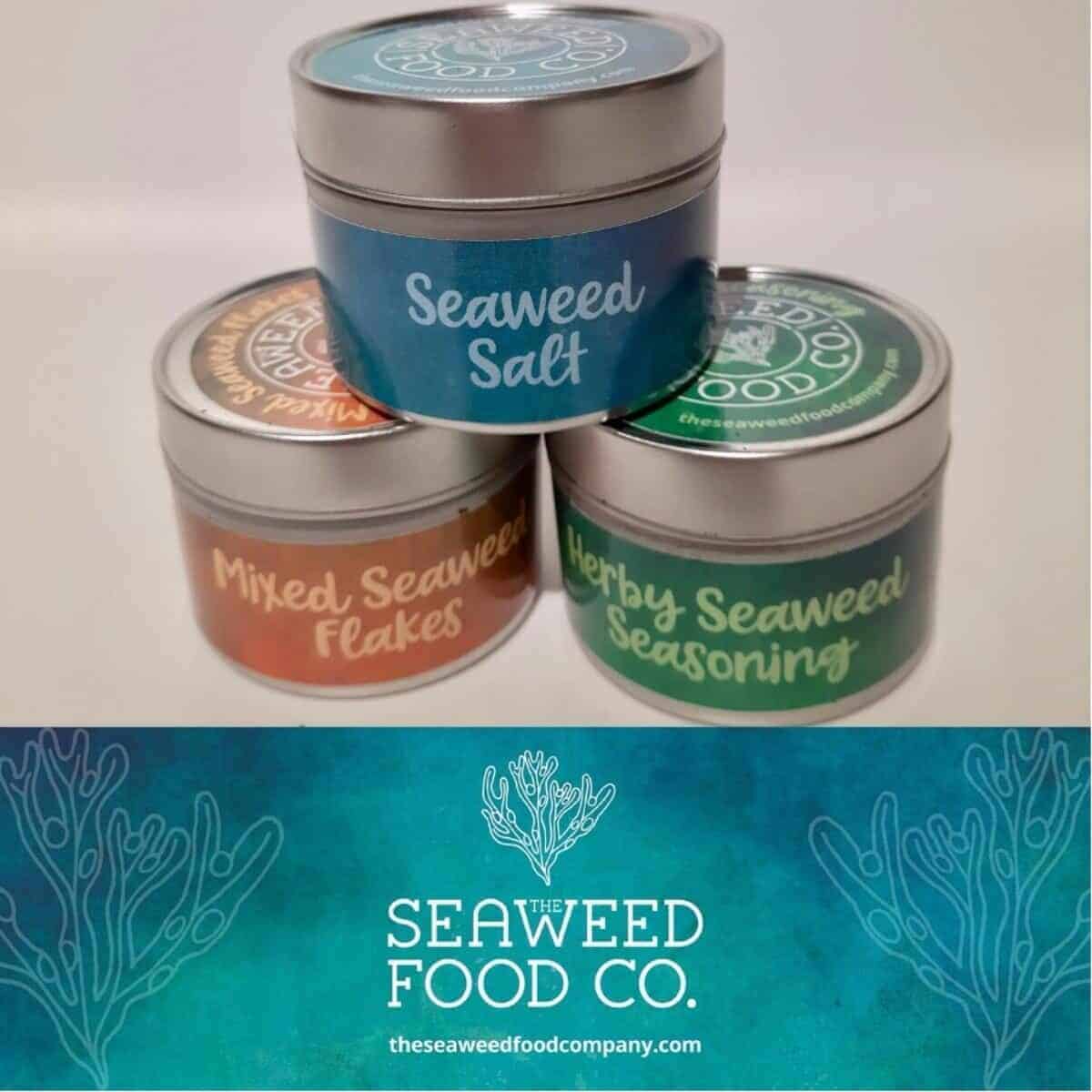Seaweed – the forgotten super ingredient
A guest post by Ben & Naomi Tustin from The Seaweed Food Co.
Seaweed has been used all over the world for millennia to provide much-needed nutrition to diet, skin and even soil. From seaweed baths in Ireland to the low rate of heart disease in Japan, which is attributed to their high seaweed diet, or growing Jersey Royal potatoes on seaweed.
History has shown us that seaweed has a myriad of uses and is rapidly being recognised as a potential saviour for world food shortages, and alternative plastics and as a reducer of greenhouse gas emissions.

Food
We have all come across nori seaweed in sushi bars however there is growing recognition that almost all seaweed has a positive effect on the gut and overall health.
It is unique in that, across several species, it contains every protein, vitamin and trace element the human body needs.
Powdered seaweeds have been the only ingredient of diet pills in the past and are used in many supplements today, although they are often not stated on the labels as being the source of all those vitamins.
Not only does seaweed ensure that our body is functioning correctly but it also enhances the flavour of any food to which it is added. It is surprisingly very low in sodium chloride salt but contains multiple poly sodium glutamates which stimulate our umami taste buds, the flavour that comes from cooked meats, soy sauce or shellfish.
The addition of seaweed as a seasoning to all foods enhances the flavour but is particularly effective in vegetarian or vegan cooking where it is difficult to naturally reproduce umami flavours.
With the commercialisation of seaweed as a recognised food, it is becoming increasingly available in easy-to-use formulations such as seasonings and seaweed snacks which provide goodness but without an overpowering flavour.

Skincare
Seaweed baths have been used in Ireland for many centuries and have been well-known as treatments for skin problems or purely as a conditioning agent. The reason it is so good for the skin is the very high vitamin and mineral content and the ease with which these are released into the water and absorbed by the skin.
Over the last 30 years, there have been increasing numbers of cosmetic products available that are focussed on seaweed content and these have built up a stalwart following of users who want to feel positive effects on the skin while using a product that has minimal chemical composition.

Environment
Unlike all other food or cosmetic ingredients seaweed, of course, does not need land or freshwater to grow and therefore does not divert natural resources away from other consumables. It is the biggest single carbon sink in the world, it absorbs more carbon dioxide than every single blade of grass, plant and tree on the planet put together.
The ease with which it can be collected or farmed is gaining the attention of climate scientists and governments all over the world and if we can continue to increase our consumption of seaweed, even as a small part of our diets or skincare requirements, then we can guarantee that the sea will provide for us for many future generations.

About Us
Ben and Naomi began exploring the history and benefits of seaweed in 2018 and started ‘Guernsey Seaweed’, a business producing fertiliser from dried seaweed.
In early 2020, as the Coronavirus pandemic began, Ben worked with our local gin distiller to create a hand sanitiser made with seaweed. The moisturising qualities of this product have now led us to create a face and hand cream and a serum made using it too.
We also started The Seaweed Food Co. in 2020, producing food seasonings from seaweed handpicked from the beaches of Guernsey – adding flavour and goodness to meals and snacks.
Check out the Seaweed Food Company

Other ingredients tips you may like
If you like to cook with different ingredients and find different ways of using them then here are a few other articles I think you might like.
- All you need to know about celeriac and how to use it
- Oats an original superfood with lots of uses
- Is couscous healthy, how you can use couscous well
- How to grow your own vegetables from scraps
- Jackfruit – what is it and how to use it
- Cranberry juice – what are the benefits of it and how can you enjoy it